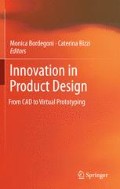Abstract
The development of digital tools for product design started with the research works on computer graphics in the 1960s. By the end of the decade a number of companies were founded to commercialize the first CAD programs. Since then, the tools and the technology used in product development have advanced rapidly, were based on different modeling methods, and used in several industrial sectors. During the years, the developers have concentrated less on the functionality of the design tools, and more on issues related to the management of the product life cycle. The chapter tells the story of the digital tools for product design, by addressing their evolution till the current product life cycle management solutions that integrate various tools for better integrating the product development phases.
Access this chapter
Tax calculation will be finalised at checkout
Purchases are for personal use only
References
Sutherland I (1963) Sketchpad: a man-machine graphical communication system. PhD thesis, Lincoln laboratory, Massachusetts institute of technology, Cambridge
Lee K (1999) Principles of CAD/CAM/CAE systems. Addison-Wesley Publishing, Reading, MA, USA
Bezier PE (1968) Procédé de définition numérique des courbes et surfaces non mathématiques. Automatisme XIII 5:189–196
Farin GE (1997) Curves and surfaces for computer-aided geometric design: a practical guide, 4th edn. Academic Press, San Diego, CA, USA
Coons SA (1997) Surfaces for computer-aided design of space forms. technical report. Massachusetts institute of technology, Cambridge, MA
Mortenson ME (1997) Geometric modeling, 2nd edn. Wiley, New York
Requicha A, Voelcher H (1974) PADL part and assembly description language. Production automation product, University of Rochester, Nov 1974
Colombo G, Pugliese D, Rizzi C (2008) Developing DA applications in SMEs industrial context. In: Cascini G (ed) Computer aided innovation (CAI), WCC 2008, Milan, Sept 7–10, 2008. Springer, London
CIMdata (2002) Product life-cycle management. Empowering the future of business. CIMdata Report. http://www.cimdata.com/publications/pdf/PLM_Definition_0210.pdf. Accessed Feb 2011
Bacheldor B, Kontzer T (2003) What PLM is and is not. http://www.informationweek.com/news/software/productivity_apps/showArticle.jhtml?articleID=12800330. Accessed Feb 2011
Datamation limited (2002) Understanding product lifecycle management datamation limited report n. PLM-11, rev. 1.0, Sept 2002. http://www.purdue.edu/discoverypark/PLM/SME/Understanding_PLM.pdf. Accessed Feb 2011
Ramelli A, Rizzi C, Ugolotti M (2004) PLM paradigm in SMEs. In: Proceeding of the 14th international CIRP Design seminar 2004, Design in the global village, Cairo, 16–18 May 2004
Bertoni M, Bordegoni M, Cugini U, Regazzoni D, Rizzi C (2009) PLM paradigm: How to lead BPR within the product development field. comput ind. doi: 10.1016/j.compind.2009.02.004
Cugini U, Bordegoni M (2005) From systematic innovation to PLM. In: Dankwort W (ed) Holistic product development—challenges in interoperable processes methods and tools. Shaker-Verlag, Aachen
Author information
Authors and Affiliations
Corresponding author
Editor information
Editors and Affiliations
Rights and permissions
Copyright information
© 2011 Springer-Verlag London Limited
About this chapter
Cite this chapter
Fucci, M. (2011). The Evolution of Digital Tools for Product Design. In: Bordegoni, M., Rizzi, C. (eds) Innovation in Product Design. Springer, London. https://doi.org/10.1007/978-0-85729-775-4_1
Download citation
DOI: https://doi.org/10.1007/978-0-85729-775-4_1
Published:
Publisher Name: Springer, London
Print ISBN: 978-0-85729-774-7
Online ISBN: 978-0-85729-775-4
eBook Packages: EngineeringEngineering (R0)

